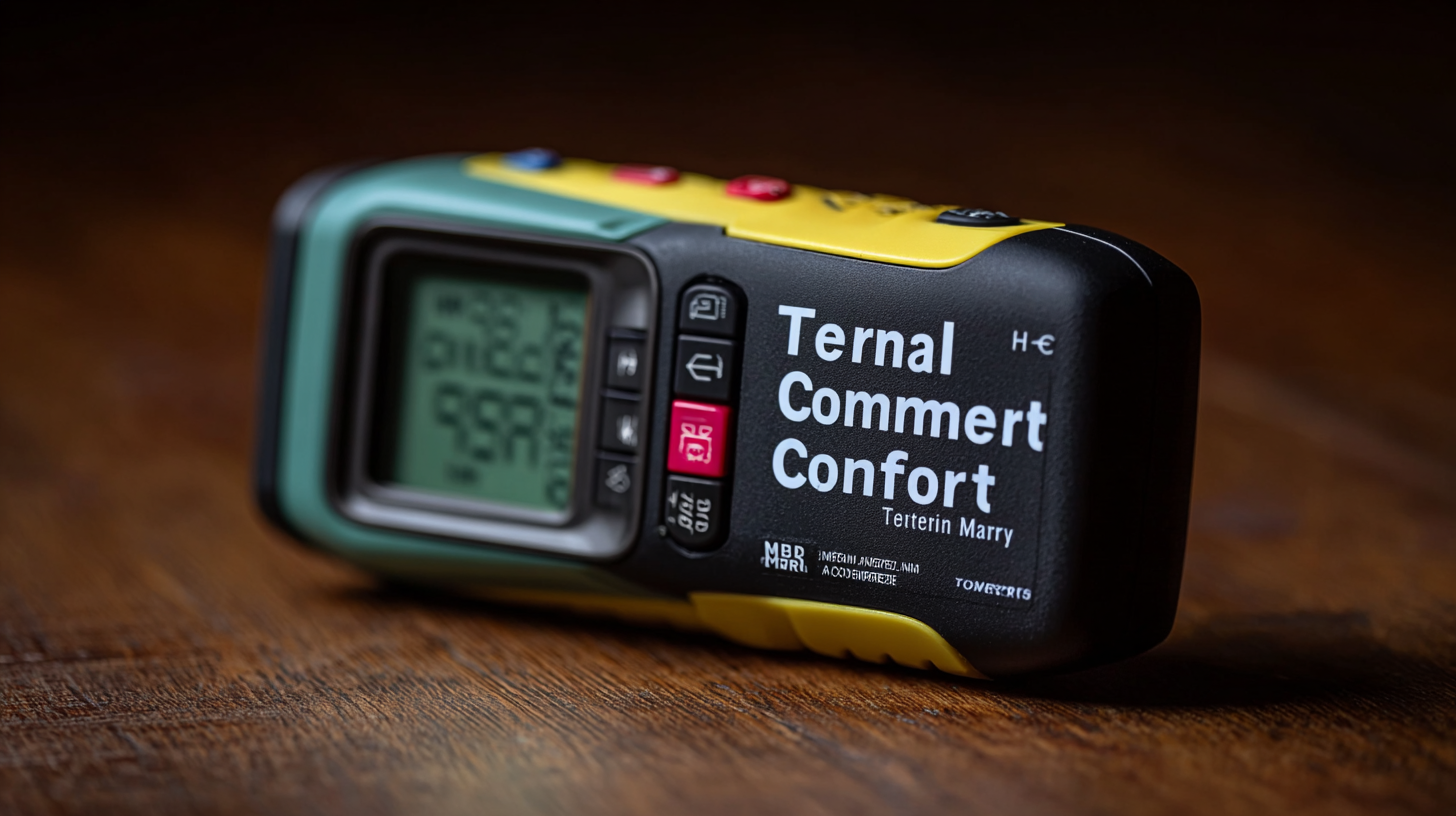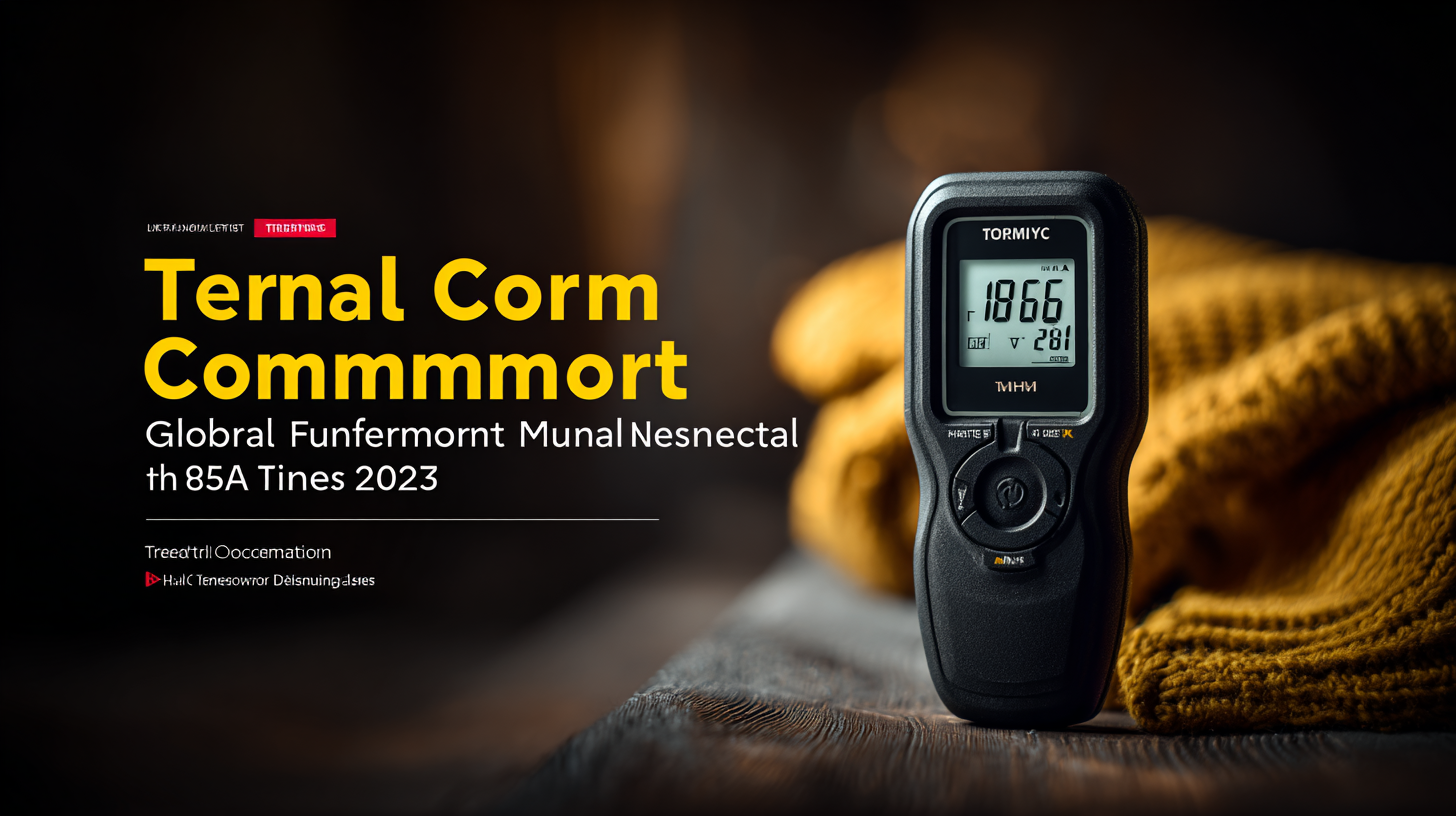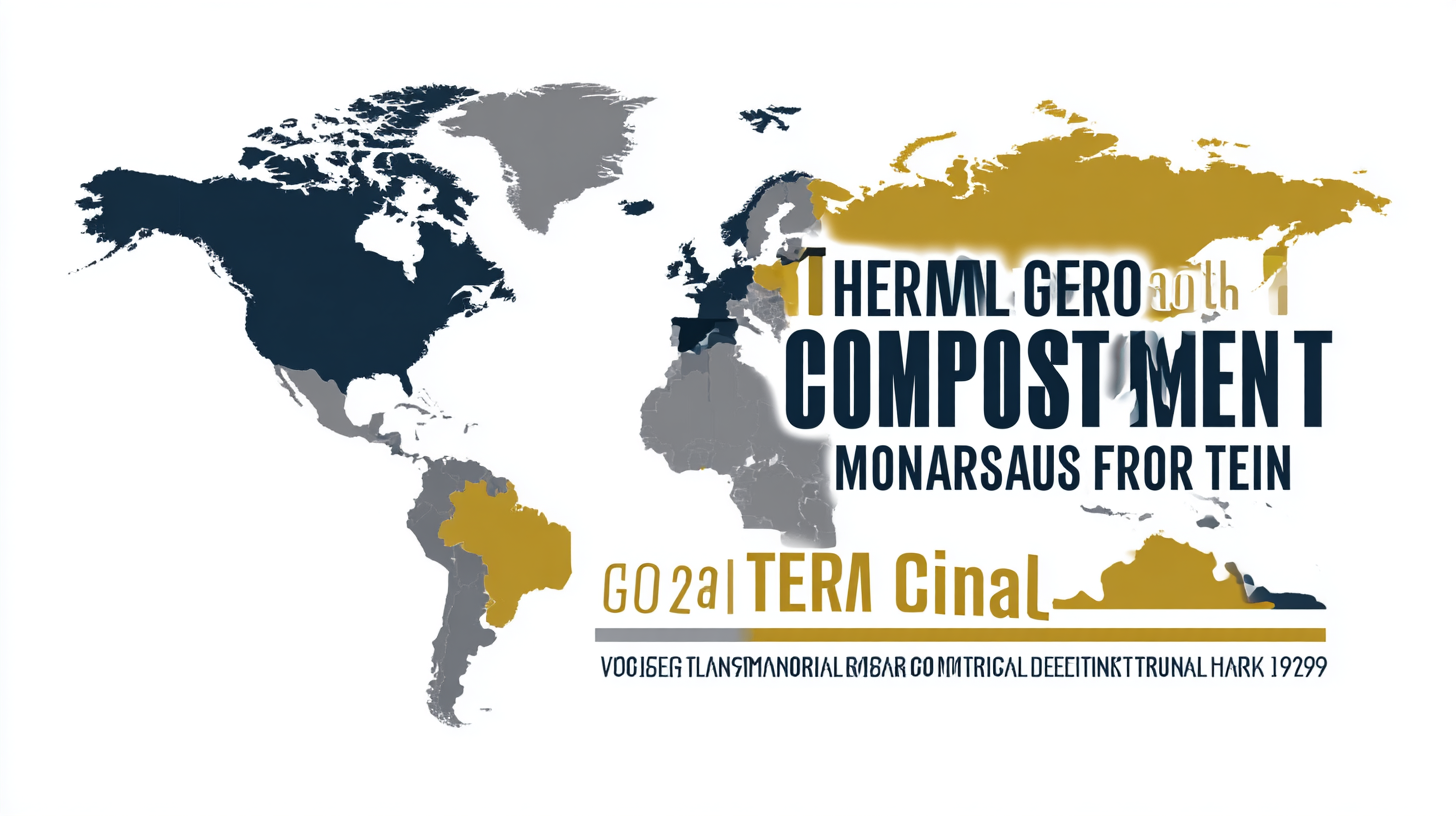
-
Home
-
Product Center
-
Application
-
Support
-
JT Cloud
-
About Us
-
Contact Us
Leave Your Message

In today's rapidly evolving global marketplace, the significance of the Thermal Comfort Measuring Instrument has become paramount as industries strive to enhance the well-being of individuals in various environments. As we approach 2025, emerging market trends reflect a growing demand for innovative solutions that ensure optimal thermal comfort, driving manufacturers to focus on quality and precision. China’s manufacturing sector is making notable strides, positioning itself as a leader in the global export of these essential instruments. With insights into current trends and essential tips for stakeholders, this blog aims to provide a comprehensive overview of the global market for Thermal Comfort Measuring Instruments, highlighting the advancements and competitive landscape that define the industry’s future.

Embracing quality and innovation will be crucial for success as we navigate the complexities of global demands and technological advancements.
Thermal comfort measuring instruments are essential tools in assessing the comfort levels of individuals in various environments, particularly in residential, commercial, and industrial settings. These instruments are designed to gauge factors such as temperature, humidity, air velocity, and radiant temperature. By accurately measuring these parameters, they help create optimal indoor conditions that can enhance well-being and productivity. The importance of these instruments cannot be overstated, as they play a critical role in HVAC (heating, ventilation, and air conditioning) system design and operation, ultimately contributing to energy efficiency and cost savings.
In the context of global market trends, the demand for advanced thermal comfort measuring instruments is expected to grow significantly by 2025. As sustainability and energy efficiency become paramount concerns, businesses are increasingly recognizing the need for precise climate control to improve both employee satisfaction and operational efficiency. Innovative technologies, such as smart sensors and IoT (Internet of Things) integration, are revolutionizing the industry, allowing for real-time data analysis and enhanced user experiences. By focusing on these key factors, organizations can ensure they remain competitive in a rapidly evolving market while promoting a comfortable atmosphere for their occupants.
As the demand for thermal comfort instruments continues to rise, understanding the key technological specifications becomes essential for selecting the best device for your needs. When looking at infrared thermal cameras, such as the PCE TC-30, it is crucial to consider parameters like temperature range, accuracy, and response time. These specifications will influence how effectively the instrument can assess thermal comfort in various environments, especially during extreme climatic conditions.
To enhance your experience with thermal comfort measuring instruments, here are some tips: First, ensure that the device you choose is calibrated regularly to maintain accuracy. Regular calibration is vital for obtaining reliable data, particularly in professional settings where precision is critical. Second, familiarize yourself with the user interface and functionalities of the instrument. Understanding how to adjust settings and interpret the readings can significantly improve the efficiency of your assessments.
Lastly, consider integrating the thermal comfort instrument with software for real-time data analysis and reporting. This combination can provide deeper insights into thermal conditions over time, helping you make informed decisions related to environmental design and occupant comfort. By leveraging these technological specifications and practical tips, you'll be well-equipped to navigate the evolving landscape of thermal comfort measuring instruments by 2025.
| Measurement Type | Accuracy | Range | Power Source | Connectivity Options | Price Range (USD) |
|---|---|---|---|---|---|
| Thermal Comfort Meter | ±0.5°C | 0°C - 50°C | Battery-operated | Bluetooth, USB | 100 - 300 |
| Infrared Thermometer | ±1.0°C | -50°C - 400°C | Battery-operated | None | 50 - 150 |
| Data Logger | ±0.2°C | -20°C - 60°C | AC powered | Wi-Fi, USB | 200 - 500 |
| Kestrel Meter | ±0.3°C | -20°C - 70°C | Battery-operated | Bluetooth | 150 - 400 |
The global market for thermal comfort measurement is witnessing significant evolution, driven by the rising need for enhanced indoor environmental quality and energy efficiency. With the Chilled Beam System market valued at $203 million in 2020 and projected to reach $298 million by 2025, it reflects a robust compound annual growth rate (CAGR) that underscores growing investment in technologically advanced solutions capable of optimizing thermal comfort in various environments. This trend is further complemented by the cooling fabrics market, which is expected to grow from USD 1.99 billion in 2025 to USD 3.62 billion by 2033, marking a CAGR of 7.75%. These advancements in thermal comfort technologies are propelled by increasing consumer awareness and a shift towards sustainable living.

Another notable sector is the heat recovery ventilator market, with an estimated value of approximately USD 5.8 billion in 2024, anticipated to grow at a CAGR of 5.2% through 2030. This growth pattern illustrates an increasing reliance on innovative systems that not only enhance occupant comfort but also contribute to energy savings by recovering wasted heat. As the demand for breathable, comfortable spaces escalates, industries are adapting and innovating to align with these essential trends shaping the thermal comfort measurement landscape by 2025 and beyond.
Choosing the right thermal comfort measuring instrument involves understanding both your specific needs and the instruments available in the market. According to a recent report by the International Energy Agency, an optimal thermal comfort level can enhance productivity and satisfaction by up to 20% in working environments. Therefore, assessing factors such as measurement accuracy, ease of use, and specific features like humidity and air velocity sensors is essential for making an informed decision.
When selecting a thermal comfort measuring instrument, consider the following tips: First, verify that the instrument complies with standards like ASHRAE 55 or ISO 7730, which outline methodologies for evaluating thermal comfort. Second, prioritize user-friendly features such as digital displays and mobile app integrations, which can significantly streamline data collection and analysis. Lastly, evaluate the instrument's calibration frequency and support for data logging, as these aspects can greatly influence the reliability and convenience of continuous monitoring.
Investing in the right thermal comfort measuring equipment can make a significant difference in maintaining an ideal indoor environment. With a projected market growth by 2025, driven by advancements in IoT technology and smart buildings, now is the perfect time to explore the available options and leverage comprehensive data for your thermal comfort needs.
When it comes to ensuring optimal thermal comfort in various environments, the accuracy of measurement instruments is paramount. Regular maintenance and calibration of thermal comfort devices play a critical role in their performance. To maintain accuracy, it is essential to follow a routine calibration schedule based on the manufacturer's recommendations or industry standards. This helps in identifying any drift in measurements that can occur over time and ensures that readings reflect true conditions.

In addition to calibration, proper maintenance of thermal comfort devices cannot be overstated. Regularly inspecting sensors for dust or obstructions and cleaning them as needed can prevent erroneous readings. It's also advisable to check battery levels and replace them to ensure consistent performance. Keeping software updated is another vital practice, as advancements in technology can enhance functionality and accuracy. By following these essential tips, users can ensure that their thermal comfort measuring instruments deliver the reliable data necessary for creating optimal environments, thus promoting comfort and productivity in various settings.